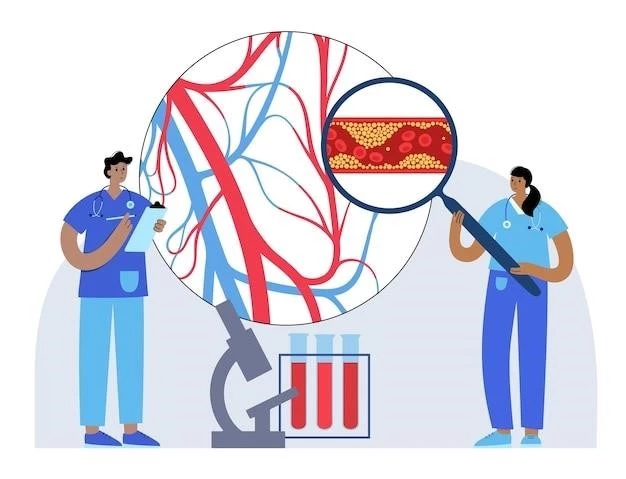Introduction
Myelofibrosis-Osteosclerosis is a complex medical condition characterized by bone marrow scarring and abnormal bone density․ While myelofibrosis leads to extensive scarring in the bone marrow, osteosclerosis results in increased bone density caused by various disorders․ Understanding these two interrelated conditions is crucial for appropriate diagnosis and treatment․
Overview of Myelofibrosis-Osteosclerosis Disease
Myelofibrosis-Osteosclerosis is a complex medical condition involving bone marrow scarring and abnormal bone density․ Myelofibrosis is characterized by extensive scarring in the bone marrow leading to anemia and low platelet levels․ On the other hand, osteosclerosis results in increased bone density due to various factors․ Understanding these two conditions is crucial for accurate diagnosis and management․
Myelofibrosis can lead to an enlarged spleen, weakness, fatigue, and an increased risk of bleeding due to the scarcity of platelets․ Osteosclerosis, a rare skeletal disorder, manifests as high bone density caused by excessive bone formation or reduced bone resorption․ Research is ongoing on emerging therapies targeting different pathways in myelofibrosis treatment․ Studies have shown a correlation between myelofibrosis and osteosclerosis, emphasizing the importance of addressing both aspects in patient care․
Primary myelofibrosis is a chronic disorder associated with bone marrow fibrosis and extramedullary hematopoiesis․ Recent findings suggest a link between overproduction of OPG and osteosclerosis in myelofibrosis patients․ Understanding the mechanisms underlying high bone turnover and progressive bone mass increase in myelofibrosis is essential for developing effective treatment strategies․ Overall, further research is needed to explore the intricate connection between myelofibrosis and osteosclerosis for improved patient outcomes․
Understanding Myelofibrosis
Myelofibrosis is a type of leukemia that affects blood and bone marrow․ It leads to severe anemia, weakness, and an enlarged spleen due to extensive scarring in the bone marrow․ This condition also increases the risk of bleeding by reducing the number of blood-clotting cells known as platelets․
Causes and Symptoms of Myelofibrosis
Myelofibrosis results from extensive scarring in the bone marrow, leading to severe anemia, weakness, fatigue, and an enlarged spleen․ The condition arises due to an abnormal production of blood cells, causing a decrease in platelets which can lead to an increased risk of bleeding․ Common symptoms include night sweats, unexplained weight loss, and bone pain․ Genetic mutations like JAK2, CALR, or MPL are often associated with myelofibrosis․ Diagnosis involves blood tests, bone marrow aspiration, and biopsy to confirm the disease․
Diagnosis and Treatment Options
Diagnosing myelofibrosis involves blood tests to check for abnormal blood cell counts, genetic mutations like JAK2٫ CALR٫ or MPL٫ and imaging tests such as bone marrow biopsy․ Treatment options for myelofibrosis include medications to manage symptoms٫ blood transfusions to address anemia٫ and stem cell transplants in severe cases․ Targeted therapies and emerging treatments aim to slow down the progression of the disease and improve quality of life for patients․

Exploring Osteosclerosis
Osteosclerosis is a rare skeletal disorder characterized by increased bone density resulting from excessive bone formation or reduced bone resorption․ It can be caused by various congenital or secondary disorders, including metabolic and neoplastic diseases․ Understanding the underlying mechanisms of osteosclerosis is essential for accurate diagnosis and appropriate management․
Causes and Symptoms of Osteosclerosis
Osteosclerosis, a rare skeletal disorder, is characterized by diffuse high bone density caused by increased bone formation or reduced bone resorption․ This condition can be a result of congenital factors or secondary to metabolic and neoplastic diseases․ Symptoms of osteosclerosis include skeletal abnormalities with radiographic evidence of elevated bone density, often leading to diagnostic challenges due to its rarity and diverse underlying causes․
Relation of Osteosclerosis to Myelofibrosis
Osteosclerosis and myelofibrosis have a complex relationship, with myelofibrosis causing extensive scarring in the bone marrow and osteosclerosis leading to increased bone density․ Research indicates a correlation between the two conditions, highlighting the need for a comprehensive understanding of their interconnected pathophysiology․ Patients with myelofibrosis may experience skeletal abnormalities related to osteosclerosis, emphasizing the importance of addressing both aspects in the diagnosis and management of these rare disorders․

Myelofibrosis-Osteosclerosis Connection
The relationship between myelofibrosis and osteosclerosis is complex, with myelofibrosis causing bone marrow scarring and osteosclerosis resulting in increased bone density․ Understanding the interaction between these conditions is crucial for effective diagnosis and treatment strategies․
Impact of Myelofibrosis on Bone Marrow
Myelofibrosis causes extensive scarring in the bone marrow, leading to severe anemia, weakness, and an enlarged spleen․ The condition disrupts the normal production of blood cells, affecting platelet levels and increasing the risk of bleeding․ Understanding the impact of myelofibrosis on bone marrow function is essential for managing the disease and its associated complications effectively․
Research Findings on Osteosclerosis in Myelofibrosis Patients
Studies indicate that osteosclerosis in myelofibrosis may be linked to the overproduction of osteoprotegerin (OPG)․ Research suggests that increased levels of OPG are associated with osteosclerosis development in patients with myelofibrosis․ Understanding the role of OPG in bone metabolism in the context of myelofibrosis could provide valuable insights into the pathophysiology of osteosclerosis in these individuals․
Current Developments
Research on myelofibrosis continues to advance, with studies exploring the impact of bone marrow scarring on patients․ Emerging therapies target various pathways for myelofibrosis treatment, offering hope for improved outcomes․ Recent case reports shed light on rare complications like cardiac tamponade in myelofibrosis patients, highlighting the need for comprehensive care approaches․
Emerging Therapies for Myelofibrosis Treatment
Research on myelofibrosis treatment is evolving, with emerging therapies targeting various pathways to address the complications associated with the disease․ Promising developments aim to improve patient outcomes and quality of life by mitigating symptoms and slowing disease progression․ One study presented a patient with myelofibrosis who developed cardiac tamponade, underscoring the need for comprehensive care approaches in managing rare complications․
Research Studies and Case Reports
Researchers have presented a case report of a patient with primary myelofibrosis developing cardiac tamponade, highlighting the importance of comprehensive care in managing rare complications․ Studies explore the connection between osteosclerosis in myelofibrosis patients and the potential role of osteoprotegerin (OPG) overproduction in bone metabolism․ Further research aims to unravel the mechanisms underlying high bone turnover and progressive osteosclerosis in myelofibrosis, offering new insights into disease pathogenesis․
Understanding the complex relationship between myelofibrosis and osteosclerosis is essential for improved patient care․ Research into emerging therapies and the impact of bone marrow scarring provides hope for enhanced treatment strategies and outcomes․ Further investigations into the mechanisms underlying these conditions are critical for advancing our knowledge and management of this challenging disease combination․
Future Directions in Myelofibrosis-Osteosclerosis Research
Further research in myelofibrosis-osteosclerosis aims to explore the intricate relationship between bone marrow scarring and abnormal bone density․ Investigating the mechanisms underlying osteosclerosis development in myelofibrosis patients, particularly the potential role of osteoprotegerin (OPG), is crucial for advancing treatment strategies․ Future studies may focus on targeting OPG-related pathways to address bone metabolism abnormalities and improve outcomes for individuals with this complex disease combination․
